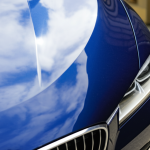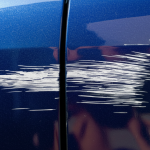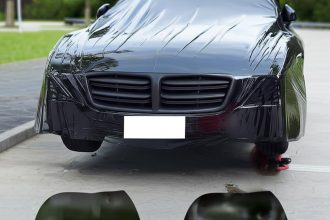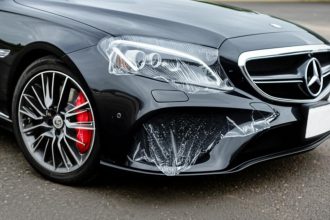The engine hums, the map is spread out, and the open road calls. You’re planning an epic long-distance road trip across Thailand! Visions of misty mountains in the north, scenic coastal drives, and perhaps even venturing onto less-travelled paths fill your head. But then, a practical thought intrudes: what about your car’s precious paintwork? Thailand’s diverse landscapes offer incredible beauty, but they also present challenges – steep highland passes, dusty rural tracks, and roads where loose gravel is just part of the journey. You start wondering, especially if your route involves navigating **highlands, dirt roads, or gravel stretches**, is investing in a high-quality Thermoplastic Polyurethane (TPU) Paint Protection Film (PPF), often called a ‘car衣’ (car clothing) locally, actually necessary? Or is it an expensive add-on you can skip?
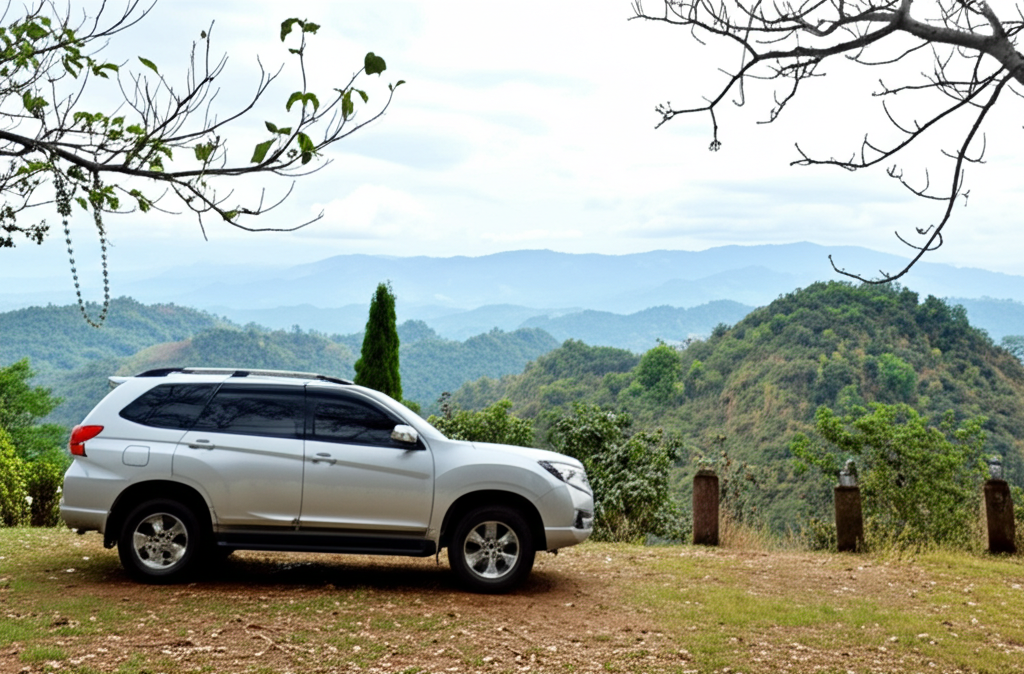
Many seasoned travellers and daily drivers in Thailand face this dilemma. The allure of adventure clashes with the fear of stone chips, scratches from overhanging branches on narrow soi, and the general wear and tear from extensive driving. Let’s dive into some real-world experiences and expert insights to help you decide if wrapping your car in TPU PPF is the right move before your big Thai road trip.
Alex, an expat living in Bangkok, had been dreaming of driving his Toyota Fortuner up to Chiang Rai and exploring the Golden Triangle region for months. His planned route wasn’t just highway cruising; it included detours through national parks known for their stunning vistas but also their occasionally unpaved access roads and gravel patches. He’d heard stories from friends about returning from similar trips with noticeable “road rash” – small chips and scratches peppering the front bumper, hood, and side mirrors.
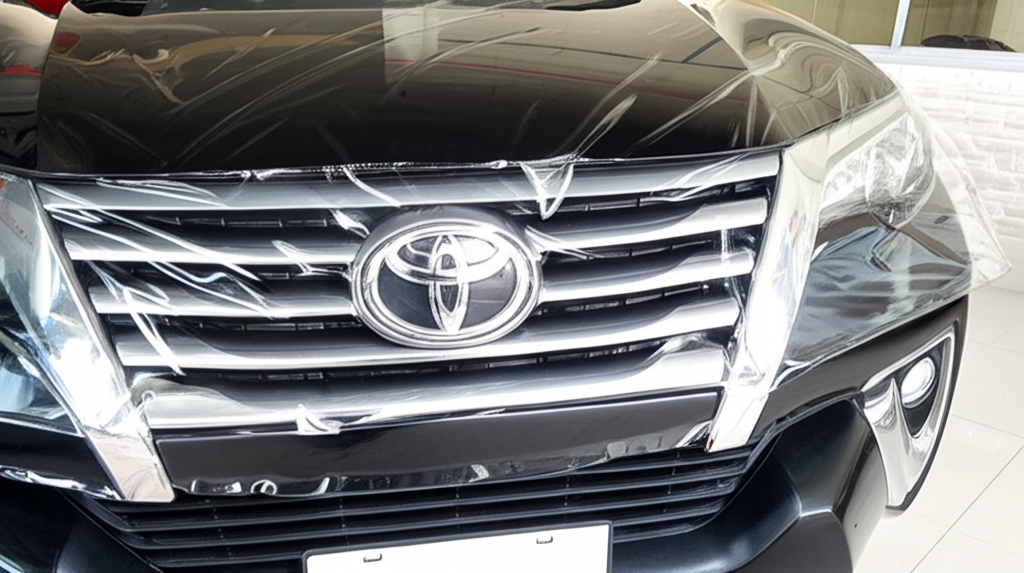
“My Fortuner was relatively new, and the thought of marring its deep blue paint on the very first major trip was disheartening,” Alex explains. “I researched options online and kept seeing recommendations for TPU PPF, especially for people who drive outside the city often or plan adventurous routes. The key selling points were its self-healing properties and resistance to impacts from small debris.”
After consulting with a reputable installer in Bangkok, Alex opted for a full front package (covering the bumper, full hood, front fenders, side mirrors) plus protection for the door edges and door handle cups – areas prone to minor damage. The installation process took a couple of days, involving meticulous cleaning and precise application of the transparent film. “When I got the car back, it looked exactly the same, maybe even glossier,” he recalls. “The film was virtually invisible. The real test, however, was the trip itself.”
Weeks later, Alex returned from his northern adventure, his Fortuner coated in a layer of dust and grime but otherwise unscathed. “We definitely hit some gravel roads, and I distinctly remember hearing pebbles flicking up against the front end, especially when passing trucks. There were also some narrow tracks with bushes brushing against the sides. Back in Bangkok, after a thorough wash, I inspected the paintwork closely. Underneath the film, it was perfect. No new chips, no scratches on the protected areas. The peace of mind knowing the paint was shielded allowed me to actually *enjoy* the drive without constantly worrying.” Alex’s experience highlights the tangible benefit of PPF when facing the exact conditions – highlands, potential dirt roads, and gravel – that worry many long-distance drivers.
So, what exactly is this TPU PPF that Alex invested in? It’s not just any plastic film. High-quality Paint Protection Film is typically made from Thermoplastic Polyurethane, a durable and flexible material known for its exceptional properties:
- Impact Resistance: This is crucial for long trips involving gravel or highways. TPU can absorb the energy from small stone chips, bug splatters, and minor debris, preventing them from reaching and damaging the paint underneath.
- Scratch Resistance & Self-Healing: Minor scratches and swirl marks, often caused by washing or light abrasions (like branches on a narrow road), can often disappear with exposure to heat (like the sun or warm water). The top layer of the film can essentially ‘flow’ back into place, maintaining a smooth finish.
- UV Protection & Stain Resistance: Thailand’s strong sun can cause paint to fade over time. PPF acts like sunscreen for your car, blocking harmful UV rays. It also resists staining from bird droppings, tree sap, and acidic rain – common issues on long journeys where the car might sit outdoors.
- Hydrophobicity: Many modern TPU films have hydrophobic properties, meaning water and dirt bead up and roll off more easily. This makes cleaning much simpler, especially after tackling muddy or dusty roads.
- Clarity & Gloss Enhancement: Good quality TPU PPF is virtually invisible when applied correctly and can even enhance the gloss and depth of your car’s original paint.
But how does it compare to other options or doing nothing at all?
| Feature | TPU PPF | PVC Film (Lower Quality Vinyl) | Wax / Sealant / Ceramic Coating | No Protection |
|---|---|---|---|---|
| Impact Protection (Stone Chips) | Excellent | Limited / Poor | Very Minimal / None | None |
| Scratch Resistance | Excellent (often self-healing) | Poor (can scratch easily) | Good (resists micro-scratches) | None (Paint is exposed) |
| Material | Thermoplastic Polyurethane | Polyvinyl Chloride | Wax, Polymers, SiO2/TiO2 | N/A |
| Lifespan (Typical) | 5-10+ years | 1-3 years (can yellow/crack) | Months (Wax) to 1-5+ years (Ceramic) | N/A (Paint degrades over time) |
| Self-Healing (Minor Scratches) | Yes (Most quality TPUs) | No | No | No |
| Price Range (Installed) | High | Low-Mid | Low (Wax) to Mid-High (Ceramic) | Free |
| Best For | Maximum physical protection, long-term value retention, adventurous driving. | Short-term, budget colour change or very basic protection (not recommended for impact). | Gloss, ease of cleaning, chemical resistance, light scratch resistance (Ceramic). | Minimalists or those unconcerned with paint condition. |
As the table shows, while ceramic coatings offer great gloss and easier cleaning, they provide minimal protection against the physical impacts common on long, adventurous trips involving rough roads. TPU PPF stands out as the superior choice for drivers specifically concerned about stone chips, deep scratches, and the hazards of highland, dirt, and gravel roads.
It’s not just Alex. Many drivers who’ve taken the plunge share similar sentiments:
“I was hesitant about the cost of PPF for my Ranger before driving the Mae Hong Son loop. But seeing the number of bikes and trucks kicking up stones, I was so relieved I had it. Washed the truck afterwards – not a single new chip on the hood or bumper. Worth every Baht for the peace of mind.” – Pisit C., Pickup Owner
“Living in Phuket, I do frequent trips up to Krabi and Khao Sok. Some back roads are narrow and branches often scrape the car. My PPF has taken a few light scratches that just disappeared after parking in the sun. Before PPF, those would have been permanent marks. It keeps the car looking newer for longer.” – Sarah W., SUV Owner
“Initially, I just wanted to protect my investment. But after a long drive through Isaan during the rainy season, hitting unexpected muddy patches and debris, the PPF made cleanup incredibly easy. More importantly, I knew the paint underneath was safe from whatever got kicked up. It transforms worrying drives into enjoyable adventures.” – Tanawat P., Sedan Owner
The recurring theme is clear: initial investment concerns are often overshadowed by the post-trip relief and long-term satisfaction of preserved paintwork, especially after encountering challenging road conditions.
If your upcoming Thai road trip involves venturing beyond perfectly paved highways, if the thought of returning home with a collection of stone chips and scratches dampens your excitement, then investing in quality TPU PPF is a decision you’re unlikely to regret. It’s about protecting your vehicle’s value and appearance, but more importantly, it’s about freeing yourself to fully embrace the adventure without constantly cringing at every ping of gravel against your car.
Consider protecting high-impact areas like the front bumper, hood, fenders, and side mirrors at a minimum. A professional consultation can help determine the best coverage for your specific vehicle and travel plans.
Ready to explore PPF options for your car? Get in touch with our experts for advice tailored to Thai road conditions and your vehicle.
📱 Want to learn more about car wrap & paint protection?
Feel free to reach us on LINE:

🌐 Official Website: https://tpuwraps.com
- Q: Is TPU PPF really worth the high cost just for one trip?
- A: Think of it as long-term protection. While a single trip might highlight the need, the PPF protects your car daily from minor dings, scratches, bug acids, and UV rays. For long-distance trips, especially on challenging roads (highlands, gravel), it provides crucial defense against immediate damage that can be costly to repair. It also helps maintain the resale value of your vehicle.
- Q: How long does TPU PPF last in Thailand’s climate?
- A: Quality TPU PPF from reputable brands, professionally installed, typically comes with warranties ranging from 5 to 10 years or even longer. It’s designed to withstand harsh UV exposure and heat, although longevity can be affected by maintenance and exposure conditions.
- Q: Will the film turn yellow or peel over time?
- A: Modern, high-quality TPU films are manufactured with UV inhibitors to strongly resist yellowing. Cheaper PVC films are notorious for yellowing and cracking quickly. Peeling is usually a result of poor installation or edge damage. Choosing a skilled installer is crucial.
- Q: Can PPF be applied only to certain parts of the car?
- A: Absolutely. Common packages include ‘Full Front’ (bumper, full hood, fenders, mirrors), ‘Partial Front’ (bumper, partial hood, partial fenders, mirrors), or you can choose specific high-impact areas like rocker panels, door edges, door handle cups, and the rear bumper luggage area.
- Q: Does PPF require special maintenance?
- A: Generally, no. You can wash and wax the car as usual, although it’s recommended to avoid abrasive polishes directly on the film. Many PPFs benefit from ceramic coating applied *over* the film for enhanced hydrophobicity and easier cleaning. Avoid using high-pressure washers too close to the film edges.
Embarking on a long-distance road trip across Thailand is an unforgettable experience. Whether you’re scaling northern mountains, navigating coastal routes, or exploring rural backroads, your vehicle is your trusted companion. Protecting its paintwork with TPU PPF isn’t just about aesthetics; it’s about preserving your investment and enhancing your driving pleasure.
For journeys that specifically involve the **highlands, potential dirt roads, or unavoidable gravel stretches**, the evidence and real-world experiences strongly suggest that TPU PPF shifts from being a luxury item to a practical necessity for maintaining your car’s condition. It offers unparalleled protection against the very elements that characterise adventurous driving in the Kingdom.
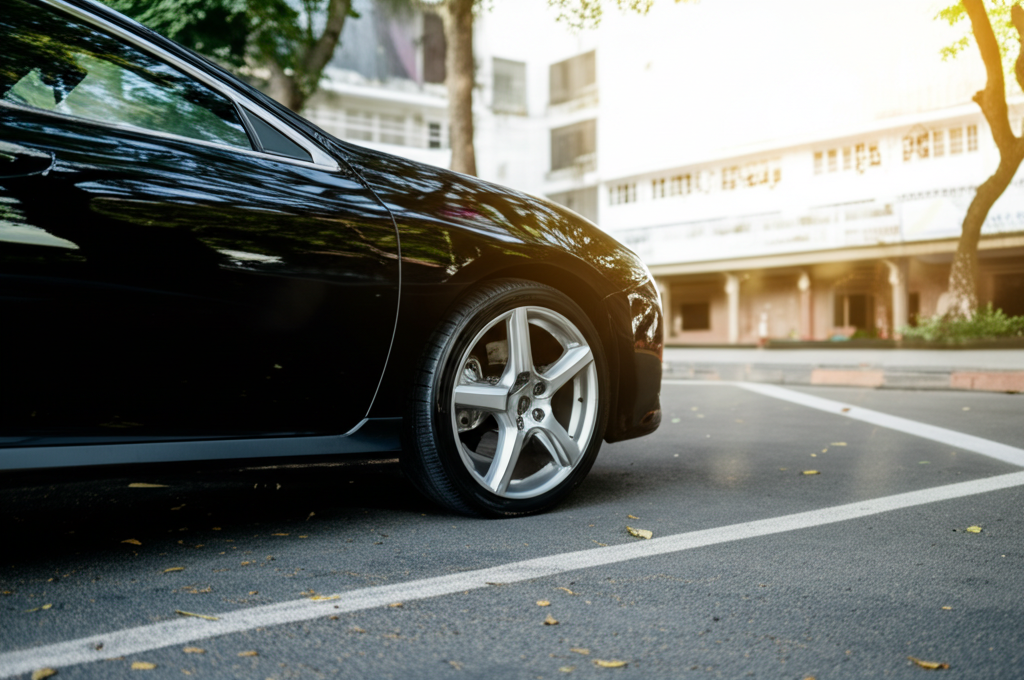
So, before you set off on your next great Thai adventure, consider giving your car the armour it needs. Drive with confidence, knowing your paint is shielded, and focus on creating memories, not worrying about potential damage. Happy and safe travels!
